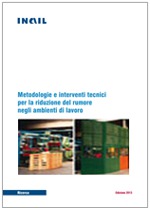Nota INL prot. n. 4817 del 06 Luglio 2023

Nota INL prot. n. 4817 del 06 Luglio 2023
ID 20719 | 05.11.2023 / In allegato
Nota DC Tutela la vigilanza e la sicurezza del lavoro dell’INL del 06/07/2023 prot. n. 4817
Oggetto: Decreto del Ministro de...
ID 21310 | 06.02.2024
The 2007 Recommendations of the International Commission on Radiological Protection (ICRP, 2007) introduced changes that affect the calculation of effective dose, and implied a revision of the dose coefficients for internal exposure, published previously in the Publication 30 series (ICRP, 1979, 1980, 1981, 1988) and Publication 68 (ICRP, 1994). In addition, new data are now available that support an update of the radionuclide-specific information given in Publications 54 and 78 (ICRP, 1988a, 1997b) for the design of monitoring programmes and retrospective assessment of occupational internal doses. Provision of new biokinetic models, dose coefficients, monitoring methods, and bioassay data was performed by Committee 2, Task Group 21 on Internal Dosimetry, and Task Group 4 on Dose Calculations.
A new series, the Occupational Intakes of Radionuclides (OIR) series, will replace the Publication 30 series and Publications 54, 68, and 78. OIR Part 1 has been issued (ICRP, 2015), and describes the assessment of internal occupational exposure to radionuclides, biokinetic and dosimetric models, methods of individual and workplace monitoring, and general aspects of retrospective dose assessment. OIR Part 2 (ICRP, 2016), this current publication and upcoming publications in the OIR series (Parts 4 and 5) provide data on individual elements and their radioisotopes, including information on chemical forms encountered in the workplace; a list of principal radioisotopes and their physical half-lives and decay modes; the parameter values of the reference biokinetic model; and data on monitoring techniques for the radioisotopes encountered most commonly in workplaces.
Reviews of data on inhalation, ingestion, and systemic biokinetics are also provided for most of the elements. Dosimetric data provided in the printed publications of the OIR series include tables of committed effective dose per intake for inhalation and ingestion, tables of committed effective dose per content for inhalation, and graphs of retention and excretion data per Bq intake for inhalation. These data are provided for all absorption types and for the most common isotope(s) of each element. The electronic annex that accompanies the OIR series of publications contains a comprehensive set of committed effective and equivalent dose coefficients, committed effective dose per content functions, and reference bioassay functions. Data are provided for inhalation, ingestion, and direct input to blood.
This third publication in the series provides the above data for the following elements: ruthenium (Ru), antimony (Sb), tellurium (Te), iodine (I), caesium (Cs), barium (Ba), iridium (Ir), lead (Pb), bismuth (Bi), polonium (Po), radon (Rn), radium (Ra), thorium (Th), and uranium (U).
ICRP, 2017. Occupational Intakes of Radionuclides: Part 3. ICRP Publication 137. Ann. ICRP 46(3/4).
...
Fonte: ICRP International Commission on Radiological Protection
Collegati

ID 20719 | 05.11.2023 / In allegato
Nota DC Tutela la vigilanza e la sicurezza del lavoro dell’INL del 06/07/2023 prot. n. 4817
Oggetto: Decreto del Ministro de...

Metodologie e interventi tecnici per la riduzione del rumore negli ambienti di lavoro
Il Manuale, approvato dalla Commissione consultiva perman...

Decreto legislativo 81/2008 in materia salute e sicurezza nei luoghi di lavoro - Ed. 06.2016 (10 Giugno 2016)
Disponibile il testo coordinato MLPS n...
Testata editoriale iscritta al n. 22/2024 del registro periodici della cancelleria del Tribunale di Perugia in data 19.11.2024